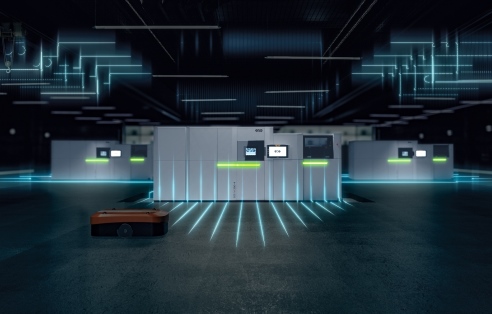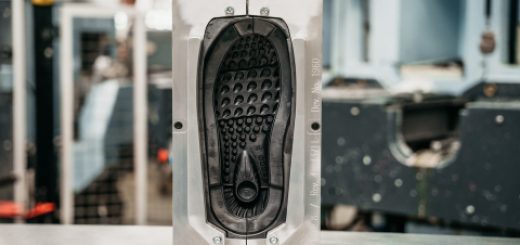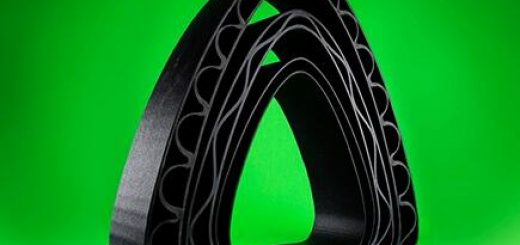EOS Showcases New Polymer Technology and Metal 3D Printing Production Cell at formnext 2018
EOS continues to drive the industrialization of additive manufacturing (AM) and will present its newest solutions at this year’s formnext. With LaserProFusion, EOS introduces a revolutionary technology for polymer additive manufacturing: with nearly one million diode lasers melting the material, building up the part layer by layer, this build process is so productive that it can serve as an injection molding alternative for many applications. Furthermore, EOS will show the latest EOS M 300-4 system as foundation of a production cell for serial additive manufacturing with metal materials. In addition, the company introduces Technology Readiness Level (TRL) in both the field of metals and polymers, which will provide additional clarity on the maturity of materials and processes.

The EOS M 300 series is the right solution for digital industrial production. (Source: EOS).
The formnext trade show will be held in Frankfurt/Main from November 13 to 16, 2018. With the slogan “Start your industrial production now” EOS will showcase its portfolio of additive manufacturing systems and software solutions as well as materials and a range of services and consulting in hall 3.1 at booth G50.
![]() EOS LaserProFusion technology: as productive as injection molding
EOS LaserProFusion technology: as productive as injection molding
With its new LaserProFusion technology, EOS will showcase innovation designed to achieve maximum productivity. As a pioneer with nearly 30 years of experience in additive manufacturing, EOS is continuously optimizing the interaction between powder material and laser, which is destined for industrial applications. Instead of the laser sintering process used to date with a single CO2-laser moving along the entire build area, this new technology uses up to one million lasers. These can achieve a maximum total output of up to 5 kilowatts. For each layer, only the diode lasers are activated that match the CAD data of the part – right down to the exact pixel. The new technology significantly shortens exposure times, regardless of the number of parts and their geometry.
Dr. Tobias Abeln, Chief Technical Officer (CTO) at EOS says: “With the LaserProFusion technology, we are achieving a new level of productivity in polymer industrial 3D printing for serial manufacturing. It is a technology that can be an alternative to injection molding in many applications, respectively enables tool-free injection molding. This will make industrial 3D printing attractive for a completely new market in the future.”
![]() EOS M 300-4 as the foundation of an AM production cell
EOS M 300-4 as the foundation of an AM production cell
At formnext, EOS will showcase the interaction of its software and hardware solutions in form of a production cell for metal industrial 3D printing. It integrates all the essential solutions for an optimal flow of parts and data throughout every step in production with AM – including design, the AM build process, and quality assurance. EOS thus meets the strict requirements for an AM serial production and is capable of supplying companies with a complete range of solutions from one single source.
Prior to the AM build process, Amphyon software from Additive Works simulates the part production, highlighting and optimizing potentially problematic areas of the part at an early stage. The intuitive, open and productive CAM tool EOSPRINT 2. Both solutions empower users to effectively prepare their part data for the build process. An, additional advantage is that the EOSPRINT 2 algorithms can be integrated directly into leading CAD systems. This allows an uninterrupted and associatively linked workflow in a consistent software environment.
The EOS M 300-4, latest system for the digital, industrial additive manufacturing of metal materials forms the core of the production cell on display. The system offers up to 10 times higher productivity while manufacturing parts to industrial-grade quality. The platform is configurable with the complete EOSTATE Monitoring-Suite for the real-time monitoring of the AM build process. The suite includes four different monitoring modules (System and Laser, PowderBed, MeltPool, and Exposure OT) that enable users to capture production and quality-related data. This ability, to carry out quality assurance during the build process is significant, particularly in large-scale manufacturing, as reproducible high part quality is absolutely essential.
In order to fully integrate additive manufacturing in industrial production environments, the production cell can be connected to existing MES/ERP applications through EOSCONNECT and its open OPC UA interface. New digital marketplaces and IoT platforms are also supported. Therefore, all the machine and production data obtained can be used in real time and form the basis of a digital factory. The first element of the EOSCONNECT software suite, EOSCONNECT Core recently became available and further modules are currently being developed.
![]() Smart service for maximum system availability
Smart service for maximum system availability
EOS accompanies its customers through every process step with a comprehensive consulting and service portfolio. The constant aim is to achieve optimum part quality and maximum system availability. In this context, EOS will be presenting its SmartCAL service solution, a combination of hardware and software for laser scanner calibration. This is key to ensure the exact positioning of the laser beam on the building platform to guarantee ideal part quality. SmartCAL helps reduce calibration time by more than 80 percent. It is also possible to calibrate the overlap area in the building space of the EOS M 300-4 and EOS M 400-4, resulting in an optimized overlap area with regard to both the mechanical part properties and the visibility of the overlap line, the basis for a further improved part quality.
EOS also recently began offering a remote service for its new generations of systems. A secure data connection to the machines enables EOS to provide the customer with support and assistance more quickly than ever before. The connection is only temporarily established at the initiative of the customer and disconnected again after communication has been completed. The data sovereignty of the customer is thus always ensured, with the clear benefit of optimum machine uptime.
![]() Reliable part properties as basis for serial additive manufacturing
Reliable part properties as basis for serial additive manufacturing
EOS is introducing classifications in the form of Technology Readiness Levels (TRL) to highlight the technological maturity of all its polymer and metal materials as well as processes. In doing so, EOS is providing level of information availability and transparency that will enable companies to compare industrial 3D printing with traditional manufacturing technologies and other 3D printing technologies. The TRL concept was developed by NASA and is established in numerous industries. Level 5, for example, refers to a verification of the technical solution, while the highest, level 9, refers to full production capability documented with extensive statistical data. With valid parameters for part properties, EOS is both facilitating and accelerating the transition to serial additive manufacturing.
For easy orientation, EOS will divide its material products into two categories: TRL 3 -6 refers to CORE products, whereas PREMIUM products are in the categories TRL 7 -9 and therefore suitable for use in serial manufacturing. One goal is the faster availability of new materials on the market with a clear value proposition. At formnext EOS will be showing examples of the new categories including a high thermal load endurance aluminum alloy (PREMIUM level) and CORE-level copper materials.
![]() A new dimension of build rates enable industrial applications
A new dimension of build rates enable industrial applications
EOS has developed new process parameters with the aim of significantly increasing the build rates of industrial components and therefore productivity. It addresses applications that were previously made conventionally using press sintering. For the market launch, EOS presents the fastest aluminum process for the material EOS Aluminum AlSi10Mg and, together with technology partner GKN Powder Metallurgy, the EOS StainlessSteel 316L VPro (volume production) with previously unattained build rates. In addition, EOS introduces a new exposure strategy to drastically reduce support structures. This allows faster build times as well as decreased material consumption and post processing.
Source:EOS




Recent Comments